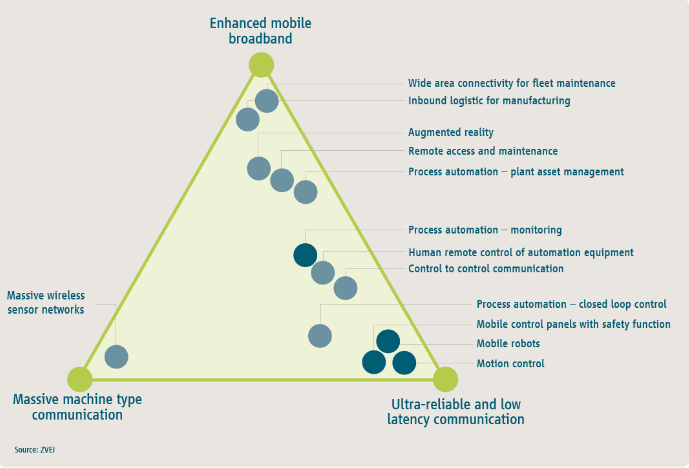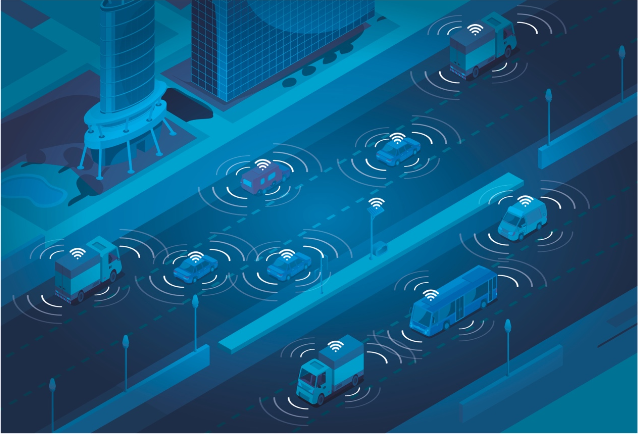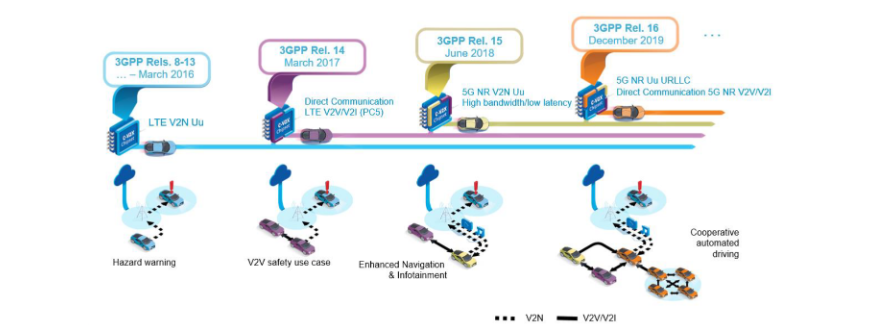
By admin Date of issue: Nov 25,2022
5G isn't just about improving mobile technology. Higher download speeds may enhance the smartphone browsing experience, but the applications where 5G's real impact will be significant are more likely yet to come. In this article, we discuss how 5G will affect the industrial and automotive industries, and how you can build 5G into your next design project.
Why 5G in industrial manufacturing?
Many of today's smart factories are limited by existing wired architectures that use proven networks such as Industrial Ethernet, Profinet and CANbus to connect various sensors, actuators and controllers in automation devices. This hard-wired connection makes even minor modifications to production facilities time-consuming and costly.
Previous generations of wireless networks, including faster 4G/LTE, have been unable to provide the real-time responsiveness and low latency needed for automatic control. In addition, the factory floor is a harsh work environment, and high electrical noise and interference pose significant challenges to the performance of many previous wireless communication technologies. The 5G enhanced network capabilities (see Figure 1) can address some of these issues and improve system efficiency and flexibility.

One of the key functions of all automated factories is monitoring. 5G brings with it large-scale machine-like communications (mMTC) capabilities to meet the needs of a wide range of wireless sensor networks (WSN). 5G is also more energy efficient than previous generations of wireless technology, which is crucial for extending the battery life of interconnected devices and minimizing maintenance.
For motion control and industrial robot applications requiring high accuracy and real time sensitivity, time sensitive network (TSN) using wired Industrial Ethernet has become the preferred networking technology. With 5G's ultra-reliable low-latency communications (URLLC), it is a viable wireless alternative, in addition to supporting cloud-based robotics applications.
Three related technologies that are being used in factory environments are virtual reality (VR), augmented reality (AR), and artificial intelligence (AI), which with the speed of 5G and URLLC can support processing at the edge. In this application scenario, power-intensive computing can be performed in the cloud, and less complex and low-cost devices can be deployed on site.
Implementing 5G presents both challenges and opportunities
In order to protect existing investments in prior wired and wireless network technologies, 5G projects must be seamlessly integrated into existing infrastructure, and one of the main challenges to date has been that indoor coverage has never been a priority for mobile network operators (MNO). The development of Open-RAN technology reduces the cost of ownership for 5G radio access networks (5G RAN), making deployment of proprietary 5G networks, also known as non-public networks (NPNS), a realistic possibility. For companies that like the idea, global regulators are making dedicated, cost-effective spectrum available for proprietary 5G networks. In addition, the proprietary 5G network can either be completely isolated from the public network or shared, depending on the operational requirements of the factory.
5G and the era of connected cars
While it may be years before Level 5 (L5) autonomous driving becomes a commercial reality, the industry is expected to be at the forefront of 5G deployment. But until then, the next car you buy will likely be Internet-enabled to manage systems like telematics, cellular Vehicle networking (C-V2X), and infotainment.

Today's interconnected cars can generate up to 4 terabytes of data a day, the equivalent of about 500 movies, and recent advances in C-V2X communications technology are already using this data in a variety of ways. For example, data from the engine management system is now sent to a remote service center for predictive maintenance; Information about local traffic conditions and weather can also be transmitted to public safety systems. Even driver behavior and vehicle miles traveled could provide data support for usage-based insurance programs.
Over the past five years, the 3rd Generation Partnership Program (3GPP) is the global standard body for cellular technologies, which include radio access, core networks and service capabilities that provide a complete system description for mobile telecommunications. 3GPP has been adding C-V2X capabilities in line with the evolution of cellular technologies (see Figure 3). The features of Release 16 paved the way for advanced Driver assistance systems (ADAS).

Although widespread adoption of self-driving cars seems some way off, there have been some very high-profile trials. Tesla, Google and BMW have all made headlines for reinforcing public expectations and pushing the boundaries of self-driving technology. Many high-end vehicles already have some degree of autonomous driving capability, some even reaching level 3 (L3), which also relies on C-V2X technology.
While 4G/LTE networks can also support many of these applications, the increasing volume of shared data is putting increasing pressure on available bandwidth. In addition, as critical on-board safety and energy management systems become more complex, low latency has become even more important. Network speed and cloud-to-edge processing power must support artificial reflex-level latency to enable a higher degree of autonomous driving. Similarly, for more complex ADAS, connected cars must respond in real time to events around them, whereas current wireless networks are reaching their limits and are increasingly a barrier to development. Without 5G, there will be no self-driving cars.
conclusion
Most 5G network deployments are focused on using 3GPP's 5G New Air Port Independent Networking (5G NR NSA) Version 15 specification to upgrade 4G/LTE, making it possible to roll out a limited range of 5G services. However, the true potential of 5G is based on the deployment of 3GPP Version 16 and beyond, version 17, and applications such as self-driving cars and factory automation will only really become a reality when the next wireless network with this level of performance can be easily accessed. The initial rollout of 5G has been somewhat cautious, influenced by the global coronavirus pandemic. The rollout of the second wave of 5G networks will certainly accelerate demand for some yet to be developed for widespread applications.
ADD:116 ChengYang Road, XiangCheng District, SuZhou City,JiangSu Province, China
Skype:sunbenku1
Email:support@wallystech.com
Copyright © 2020 Wallys Communications (Suzhou ) Co., LTD Sitemap



